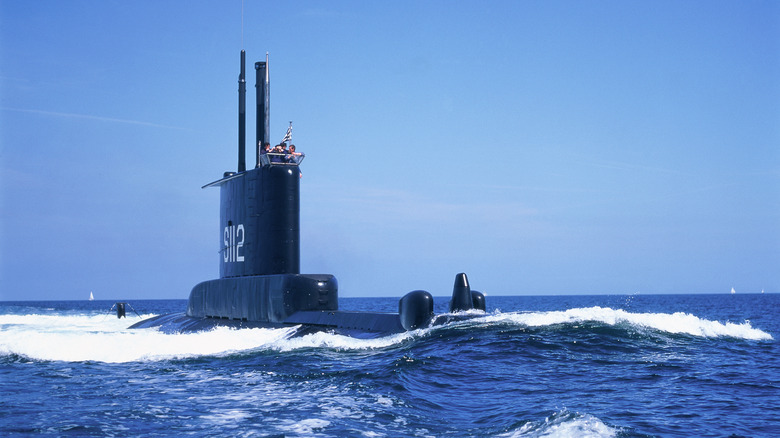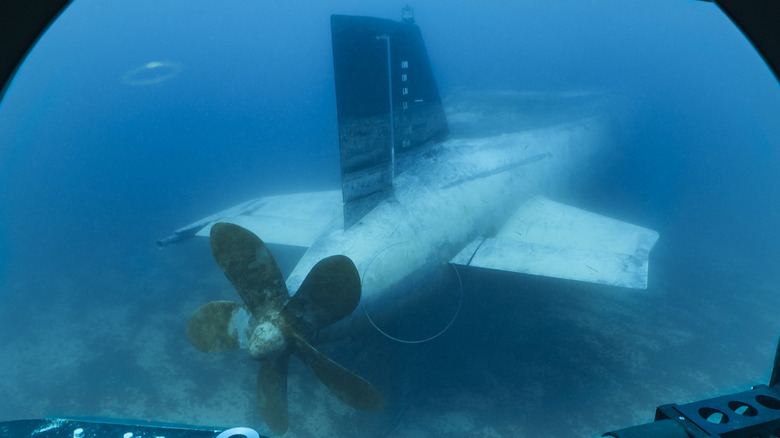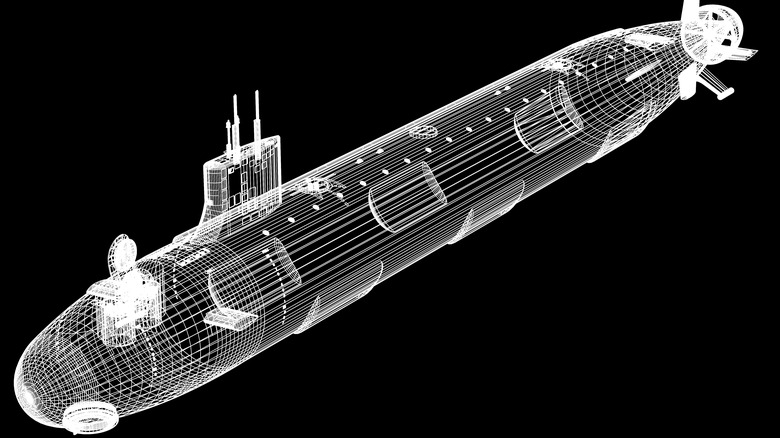How Do Submarines Submerge? The Science Behind Ballast Tanks
Submarines have evolved over the years, becoming more vital and deadlier for the national defense of their respective countries. While every other massive ship in the Navy needs to float, these vessels can submerge under the ocean's surface, making them some of the most lethal boats in a navy. A nuclear-powered sub doesn't even need to return to port until it needs a refueling, technically. Realistically, they return much more frequently than that. But it's the ability to submerge and traverse the oceans unseen that is most fascinating.
The reason submarines are able to do this is thanks to some very important components known as the ballast and trim tanks. These are located throughout the sub at the bow and stern as well as on top and underneath. They're all nestled between the outer and the inner hulls. The outer hull is what onlookers see from the outside, while the inner hull keeps the crew safe from the crushing pressure of the ocean's depths.
The ballast and trim tanks control a submarine's buoyancy. To put it simply, when a submarine needs to surface, it empties its tanks of water and when it needs to submerge, it fills its ballast tanks with water. Let's visit high school science once more to gain a better understand of buoyancy.
How do ballast tanks work?
While gravity is always at play, pulling objects toward the center of the planet, the rules of physics become a little different when you go for a swim. Gravity might be pulling you down, but now the water creates what's known as buoyant force, which pushes objects up to the surface, depending on their density. Unlike other ships, submarines can control their buoyancy. If an object is denser than the water it displaces — pushes aside — it has a negative buoyancy and will sink, meaning it's less buoyant.
To increase their density, submarine crews fill the sub's ballast tanks with surrounding water. Submersibles likewise rely on their propulsion system and adjustable hydroplanes, otherwise known as diving planes, to descend through the ocean's depths. The hydroplanes help to angle the sub, controlling its rate of descent. Hydroplanes are located both at the stern and bow of the ship.
When it's time for the sub to surface, air — because it's lighter than water — is pumped into the ballast tanks, replacing the water and giving it positive buoyancy. Subs will maintain a neutral buoyancy by holding a combination of air and water in its trim tanks to keep itself at a certain depth. Being able to control the depth of a submarine is absolutely crucial. Without precision, the ability to follow orders, or quick reflexes, a submarine can end up colliding with an underwater mountain or pop-up on a rival vessels radar/sonar. Compressed air is used to fill the tanks, which doubles as the crew's life support oxygen. In some cases, if a submarine needs to surface rapidly, high-pressure air can fill the tanks faster than usual.
The different types of ballast tanks and reserve buoyancy
When one refers to the ballast tanks, they're most commonly referring to the main ballast tanks (MBT). However, there are more than just the MBTs. While the MBTs are used to simply get the sub underwater, they use the depth control tanks (DCT) to make minor adjustments while submerged. Food and fuel consumption, the depth the vessel is at, and salinity can alter a sub's buoyancy. Crews use the DCT to account for those changes, filling and draining water out of them as needed. Lastly, there's the trim tanks. Trim tanks work help orient a submarine to have an upward or downward angle, depending on whether its's diving or surfacing. They can keep the sub perfectly level.
Ever notice that when a submarine surfaces, the bulk of its body remains under the waterline rather than float on top of the water like other ships? That's because of its reserve of buoyancy (RoB). The portion of the sub that's out of the water is known as the freeboard, which gives access to the top deck. The most significant reason for the RoB is to keep a portion of the vessel above the waterline even if several compartments were flooded or a malfunction occurs with an MBT.


